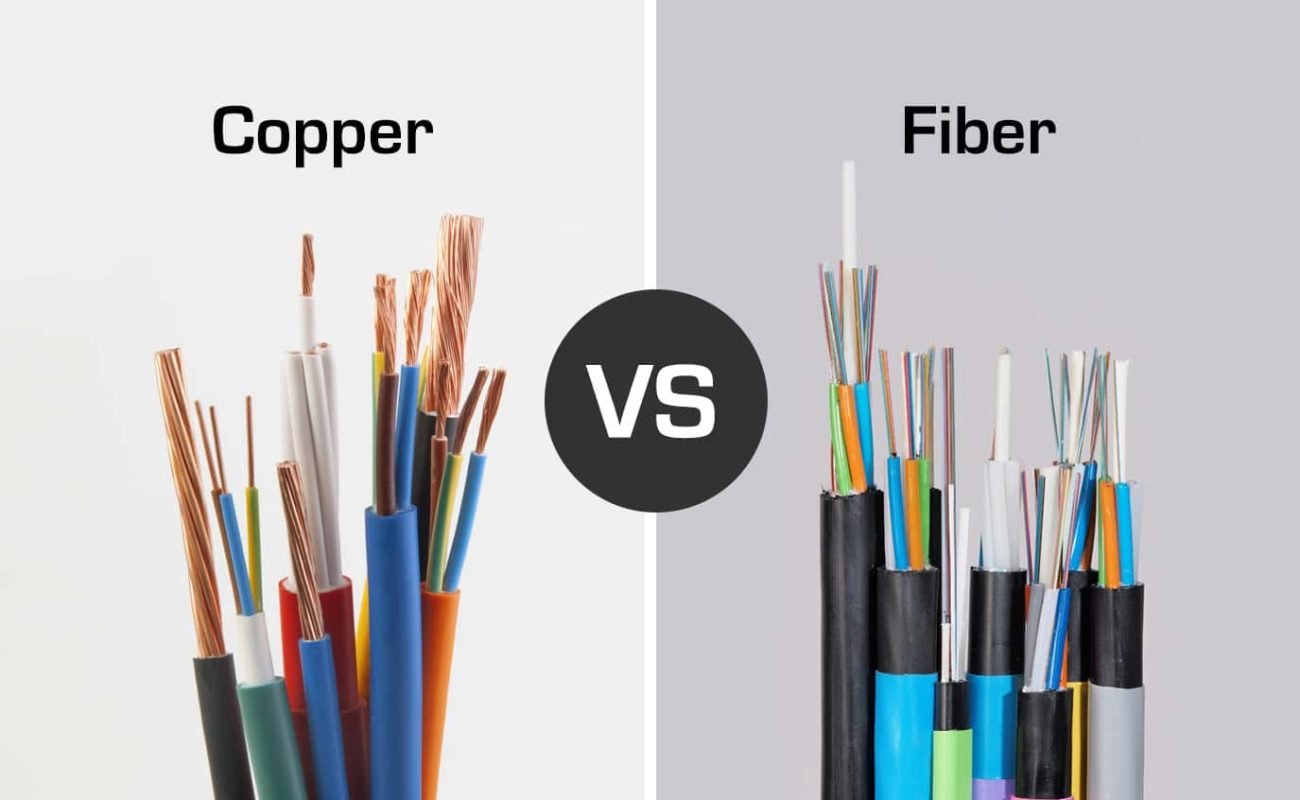Have you ever wondered why fiber optic cables are faster than copper wire?
The answer as turns out is pretty interesting
copper wire has been used for electric wiring since the very invention of the electromagnet and the telegraph hundreds of years
when the telephone was invented in the late 1800s
The copper wire became the go-to material for long-distance
Telecommunications copper would prove to be an invaluable material for many decades to come until the invention of fiber optic in the 1950s
while it would take several more decades for fiber optic to be used widely for telecommunications
it would eventually supersede copper cables for many uses
but why?
Fiber optic cables use pulses of light generated by an LED to transmit data along strands of glass or special plastics
Copper, on the other hand, relies on the transmission of electrical currents along its length to perform the same function
data is transmitted on copper cables as electrical pulses a detector receives and decodes the signal
However the longer the signal travels the more it deteriorates
This is a phenomenon referred to as signal attenuation with fiber-optic cables
The transmitter converts electronic information into pulses of light
The pulses are given in a binary system with one pulse equating to a 1 and no pulse equating to a 0 when these light pulses reach the other end of the cable
An optical receiver converts the pulses or lack of pulses back into electronic information
so far so good !!!
Although it might be important to understand what is meant by faster
when comparing the two when discussing the relative performance of either fiber optics or copper wire
The term faster is a little deceptive
Both fiber-optic cables and copper wires transmit data at speeds slower than the speed of light in a vacuum
though some recent developments in fiber optics have managed to come closer to the speed of light
Yet, either copper wire or fiber-optic speeds could in theory transmit data around the earth several times a second
For all intents and purposes when comparing the speed of the two what we are really talking about is something called throughput or capacity
these terms relate to the relative quantity of data transferred per unit of time
fiber optic cables have without a doubt the higher throughput of the two
especially over long distances
a local area network using modern copper lines can usually handle around 3,000 telephone calls at any one-time
fiber optic cables, on the other hand
can usually handle more than 31,000 calls at a time
this difference in throughput of data is determined by the frequency range that either cable can manage
the higher
the frequency range
the greater
the bandwidth
and the more data that can be transmitted through the cable at any one time
this is the key difference between the two types of cable fiber-optic cables have a significantly larger bandwidth capacity than their copper wire counterparts
for this reason, fiber optic cables can carry much higher frequency ranges than copper cables
copper wire also has the problem of attenuation or signal loss at higher frequencies when compared to fiber optic cables
fiber optic cables are also far less susceptible to noise and electromagnetic interference than copper wire as the latter is made of metal
another problem experienced by copper wire is that it can lose signal quality along its length
over a distance of say 200 miles, fiber optic transmissions will show little or no loss of quality while transmissions over the copper wire will show significant degradation
so while the copper wire is still used because it is cheaper than fiber optic cable and it is becoming faster
fiber optics still comes out on top for many uses you











